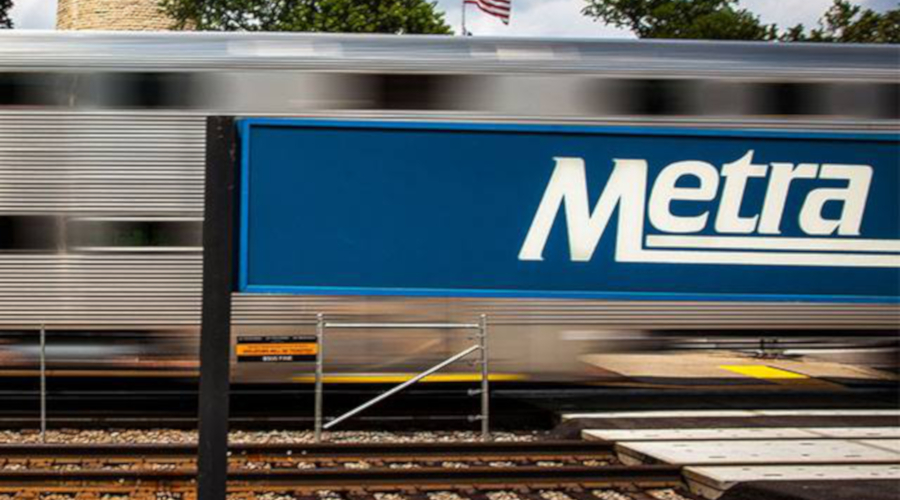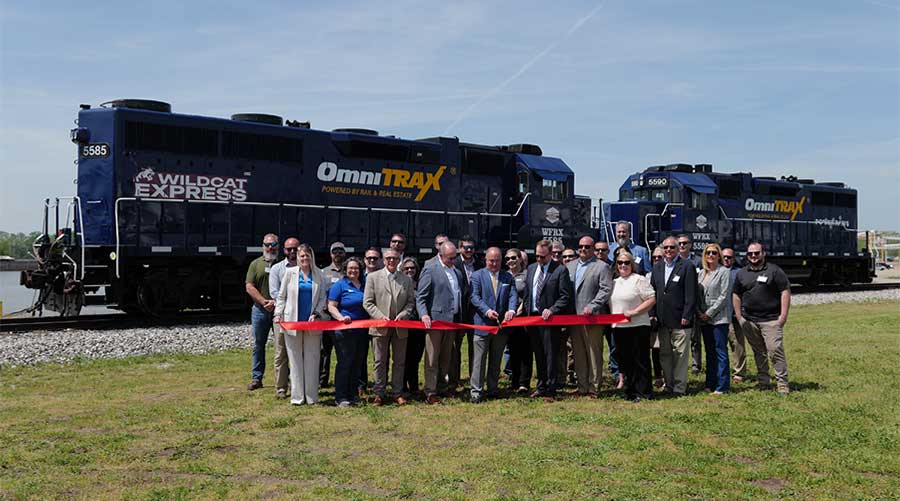Newsletter Sign Up
Stay updated on news, articles and information for the rail industry
Stay updated on news, articles and information for the rail industry
RAIL EMPLOYMENT & NOTICES
Rail News Home
High-Speed Rail
Rail News: High-Speed Rail
6/11/2012
Rail News: High-Speed Rail
HNTB's Gertler still a high-speed-rail believer
advertisement
Despite today’s hyper-partisan political climate, Peter Gertler remains optimistic that high-speed rail (HSR) will become a reality in the United States.
Gertler is chairman of the American Public Transportation Association’s (APTA) High-Speed and Intercity Passenger Rail Subcommittee and senior vice president and chairman of high-speed rail services at HNTB Corp. Last week in Dallas, where he was attending APTA’s 2012 Rail Conference, Gertler sat down with HSRupdates to talk about some of the latest developments on the HSR front, including a Texas plan to build a high-speed line between Dallas/Fort Worth and Houston, and California’s ongoing efforts to build a HSR system between Los Angeles and San Francisco.
Gertler remains “bullish” on California’s high-speed rail project, despite the ongoing debate over whether the financially strapped state can afford to build a new, multi-billion rail infrastructure program.
“It’s an ambitious program that has significant challenges to it, there’s no question about that,” he said. “But I’m very optimistic in the sense that there is $6 billion that, in combination with local monies and federal grants, has been secured and is available.”
The California High-Speed Rail Authority’s (CHSRA) new business plan and new executive leadership are positive signs that the agency is evolving from a planning entity to an implementing agency, Gertler believes. A request for proposals has been issued for the construction of the first design-build section of the system, in the valley between Fresno and Bakersfield.
“There are five teams that have been short-listed – it’s a design-build procurement. The authorities are committed to making a selection by December and are anticipating a notice to proceed to build the first construction section … to start by the beginning of 2013,” Gertler said.
“And I believe that will happen,” he added. “By early 2013, you will start to see a team in place and they’ll start to build that first section. There are four other packages that will be coming out in succession, and I believe by the end of 2013 or early 2014 there will be significant activity toward building the first 130 miles of the high-speed program in California.”
Meanwhile, interest in HSR for the Dallas-to-Houston corridor goes back decades, when an earlier plan was dropped due to opposition. Today’s planning picks up where that discussion left off by re-evaluating the need for HSR in the region, understanding the alignment options, and defining the system’s purpose, objective and potential impact, said Gertler.
“Obviously the Dallas-Houston corridor is a densely traveled and populated corridor, so clearly improved mobility and transportation between those two areas is good for the economy, quality of life issues and the environment,” he said. “We can’t continue to build our way out of these areas by just building more freeways and airports.”
The corridor also holds potential for attracting private investment. Central Japan Railway Co., which operates high-speed trains in Tokyo, Nagoya and Osaka, Japan, has expressed interest in investing about $10 billion in a Dallas-to-Houston HSR line. Gertler believes private investors would be interested in HSR development in other parts of the United States, as well. However, before the private sector will invest in HSR in a big way, the public sector has to step up to the plate first by committing its support to HSR development, he added.
“Every major infrastructure project in the world where there has been private investment, it always has been coupled with a fairly significant investment by the public sector first,” he said. “So, I do think sometime down the road there is an opportunity for private investment [in HSR], but it’s pretty much in the public domain right now, which is evaluating the need, identifying the alignment and securing or getting environmental clearance. After that point, when it’s ready to go into final design and construction, I think at that point there is an opportunity to explore private investment.”
Overall, Gertler takes the “glass-half-full” perspective on HSR’s potential in the United States. While the excitement and funding support for HSR has faded since President Obama proposed in 2009 that the United States build a nationwide high-speed rail system, the conversation now has “matured” to a point of focus on two key corridors – the Northeast and Los Angeles-to-San Francisco – where there are significant populations, travel-mobility issues and transportation infrastructure that needs improving, he said.
“But that doesn’t mean that in other areas of the country there aren’t opportunities, such as what’s happening in the Midwestern states and what’s happening here in Texas,” he said.
Projects now in the conceptual stages need to advance so that the next time there is an opportunity for federal funding, those projects will be ready to move from concept to design and construction, Gertler said.
“Once we get through the [presidential] election campaign – whatever happens will influence maybe what the funding situation may look like – but I still believe that both [political] sides strongly believe that the need to invest in infrastructure is good, it’s jobs and it’s stimulus for the economy.”
— Julie Sneider
Gertler is chairman of the American Public Transportation Association’s (APTA) High-Speed and Intercity Passenger Rail Subcommittee and senior vice president and chairman of high-speed rail services at HNTB Corp. Last week in Dallas, where he was attending APTA’s 2012 Rail Conference, Gertler sat down with HSRupdates to talk about some of the latest developments on the HSR front, including a Texas plan to build a high-speed line between Dallas/Fort Worth and Houston, and California’s ongoing efforts to build a HSR system between Los Angeles and San Francisco.
Gertler remains “bullish” on California’s high-speed rail project, despite the ongoing debate over whether the financially strapped state can afford to build a new, multi-billion rail infrastructure program.
“It’s an ambitious program that has significant challenges to it, there’s no question about that,” he said. “But I’m very optimistic in the sense that there is $6 billion that, in combination with local monies and federal grants, has been secured and is available.”
The California High-Speed Rail Authority’s (CHSRA) new business plan and new executive leadership are positive signs that the agency is evolving from a planning entity to an implementing agency, Gertler believes. A request for proposals has been issued for the construction of the first design-build section of the system, in the valley between Fresno and Bakersfield.
“There are five teams that have been short-listed – it’s a design-build procurement. The authorities are committed to making a selection by December and are anticipating a notice to proceed to build the first construction section … to start by the beginning of 2013,” Gertler said.
“And I believe that will happen,” he added. “By early 2013, you will start to see a team in place and they’ll start to build that first section. There are four other packages that will be coming out in succession, and I believe by the end of 2013 or early 2014 there will be significant activity toward building the first 130 miles of the high-speed program in California.”
Meanwhile, interest in HSR for the Dallas-to-Houston corridor goes back decades, when an earlier plan was dropped due to opposition. Today’s planning picks up where that discussion left off by re-evaluating the need for HSR in the region, understanding the alignment options, and defining the system’s purpose, objective and potential impact, said Gertler.
“Obviously the Dallas-Houston corridor is a densely traveled and populated corridor, so clearly improved mobility and transportation between those two areas is good for the economy, quality of life issues and the environment,” he said. “We can’t continue to build our way out of these areas by just building more freeways and airports.”
The corridor also holds potential for attracting private investment. Central Japan Railway Co., which operates high-speed trains in Tokyo, Nagoya and Osaka, Japan, has expressed interest in investing about $10 billion in a Dallas-to-Houston HSR line. Gertler believes private investors would be interested in HSR development in other parts of the United States, as well. However, before the private sector will invest in HSR in a big way, the public sector has to step up to the plate first by committing its support to HSR development, he added.
“Every major infrastructure project in the world where there has been private investment, it always has been coupled with a fairly significant investment by the public sector first,” he said. “So, I do think sometime down the road there is an opportunity for private investment [in HSR], but it’s pretty much in the public domain right now, which is evaluating the need, identifying the alignment and securing or getting environmental clearance. After that point, when it’s ready to go into final design and construction, I think at that point there is an opportunity to explore private investment.”
Overall, Gertler takes the “glass-half-full” perspective on HSR’s potential in the United States. While the excitement and funding support for HSR has faded since President Obama proposed in 2009 that the United States build a nationwide high-speed rail system, the conversation now has “matured” to a point of focus on two key corridors – the Northeast and Los Angeles-to-San Francisco – where there are significant populations, travel-mobility issues and transportation infrastructure that needs improving, he said.
“But that doesn’t mean that in other areas of the country there aren’t opportunities, such as what’s happening in the Midwestern states and what’s happening here in Texas,” he said.
Projects now in the conceptual stages need to advance so that the next time there is an opportunity for federal funding, those projects will be ready to move from concept to design and construction, Gertler said.
“Once we get through the [presidential] election campaign – whatever happens will influence maybe what the funding situation may look like – but I still believe that both [political] sides strongly believe that the need to invest in infrastructure is good, it’s jobs and it’s stimulus for the economy.”
— Julie Sneider


 2025 MOW Spending Report: Passenger-rail programs
2025 MOW Spending Report: Passenger-rail programs
 Gardner steps down as Amtrak CEO
Gardner steps down as Amtrak CEO
 Guest comment: Oliver Wyman’s David Hunt
Guest comment: Oliver Wyman’s David Hunt
 Women of Influence in Rail eBook
Women of Influence in Rail eBook
 railPrime
railPrime







